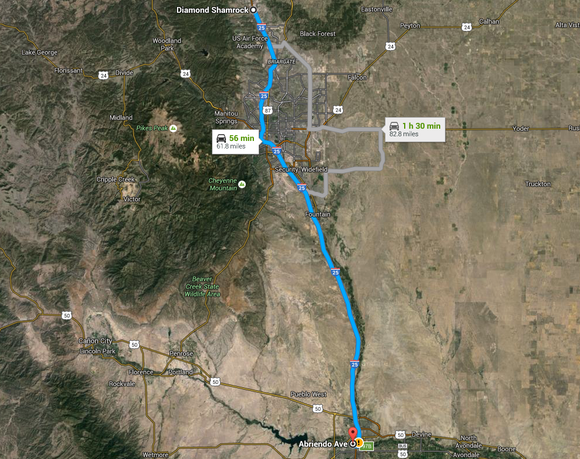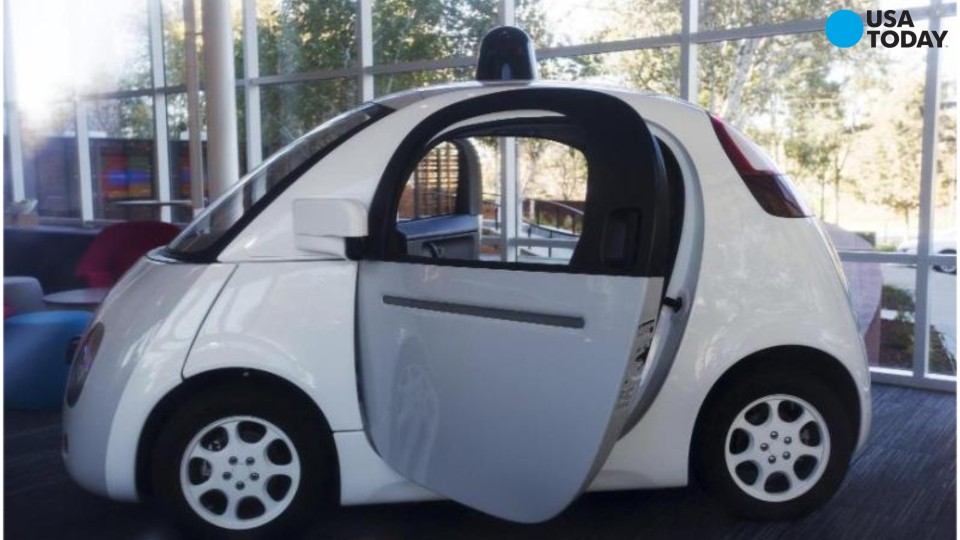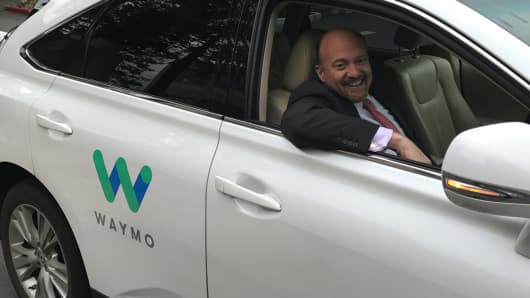http://www.usatoday.com/story/tech/...deal-make-100-self-driving-minivans/83877878/
Google, Fiat ink deal to make 100 self-driving minivans
SAN FRANCISCO – Google will collaborate with Fiat Chrysler Automobiles to put its self-driving car technology into 100 Pacifica minivans, the CEOs of both companies told USA TODAY.
The vehicles will be used to turbocharge Google's seven-year-old autonomous car program. For Fiat Chrysler, the agreement provides a technological crash course in what it takes to transform a standard vehicle into an autonomous one.
Google and other tech companies "are not my enemy, these are people who will help us shape the next phase of the automotive industry," Fiat Chrysler CEO Sergio Marchionne said by phone. Fiat shares (
FCAU) gained 3% to $8.20 after USA TODAY reported on the deal late Tuesday.
The partnership represents the first time Google’s team will be sharing with a major automaker information on how to integrate some of its secretive self-driving-car technology. Its existing fleet consists of a few dozen Lexus SUVs modified by Google staffers as well as a few two-person prototypes built in-house.
Fiat Chrysler CEO Sergio Marchionne says tech companies such as new partner Google are allies in the ongoing reformation of the automotive industry. (Photo: AJ Mast, AP)
The two companies don't as yet have a plan to put the self-driving technology into new Chrysler vehicles.
John Krafcik, head of Google's car project, said his company liked the "nimble and focused" nature of Fiat Chrysler's engineering team, as well as "the fact that they’re totally aligned with what we need to do at this stage, which is build more vehicles and get more testing miles under our belt."
Fiat's Marchionne has been vocal about the need for car man
ufacturers to embrace partnerships in order to survive the ongoing pivot in the transportation space. The company has achieved some sales success after exiting bankruptcy. But in the car technology research race, seen as the next big differentiator for automakers, rivals Ford, Audi, and BMW have made quick progress with driver-assist technology while Fiat Chrysler has kept a lower profile.
For Google, the deal means it will be able to quickly expand its self-driving car testing program because it will not have to modify 100 minivans from scratch. Instead, it will take delivery of a fleet of 2017 Pacificas that have been tweaked to accommodate the array of on-board radar, laser-radar and cameras that allow cars to drive themselves.
The Alphabet-owned Google car project currently tests in Mountain View, Calif., Phoenix, Austin and Kirkland, Wash., and would be in position to add new cities as soon as the modified Pacificas complete testing at Google’s California test facility later this year. So far, Google cars have logged 1.5 million miles with only one at-fault accident.

DETROIT FREE PRESS
9 reasons why Fiat Chrysler-Google partnership makes sense
Real-world testing is considered integral to both winning over nervous consumers and getting lawmakers to fast-track guidelines to integrate such tech into society.
“That will be a great learning opportunity for us and for FCA,” says Krafcik, a for
mer head of Hyundai North America who was brought on last year to help coordinate just such liaisons. Google execs have long said they have no interest in building their own self-driving cars.
“This is all in service of a key point, which is that it will more than double our fleet of cars and that means more testing miles and more opportunities for people to become familiar with their real-world capabilities," he says.
Krafcik adds that the two companies have been talking “for about a year.” He would not comment on a rumored deal with Ford that surfaced in January, but noted that while “we’re excited FCA will be the first we integrate with, we will be working with many different partners going forward.”
Fiat 500, which looks not unlike Google's self-driving prototype. (Photo: Damian Dovarganes, AP)
Google's self-built, self-driving two-person prototype, which looks not unlike a Fiat 500. (Photo: Tony Avelar, AP)
Marchionne has been adamant that automakers must focus on economies of scale, which could mean consolidating or forging new partnerships in strategic areas.
"This announcement is a recognition of the fact we found a sharing of the minds with Google, but we cannot preclude someone else coming in (to help)," said Marchionne.
The auto business has been highly vertical, where carmakers manufactured everything from the seats to the engines, he noted. "But this next phase will disintermediate a lot of those processes. And the only way to survive this is to be nimble and receptive enough to this technology coming in," he said.

USA TODAY
Self-driving car advocates: Feds should set safety rules, not states
Among U.S. automakers, Chrysler is especially accustomed to joining forces with other companies in an effort to stay in the game.
In 1998, Daimler and Chrysler joined forces, but the so-called union of equals quickly saw the German automaker take charge before ultimately selling Chrysler to Cerberus Capital Management in 2007.
The company went through bankruptcy in 2009, and got a bailout from the federal government. That’s when Italy’s Fiat entered the picture; in 2014, Fiat completed its purchase of the company.
A self-driving Lexus SUV owned by Google's parent company Alphabet struck a bus February 14 while it was testing on the streets of Mountain View, Calif. Wochit
On Tuesday, Fiat Chrysler
announced a 6% jump in sales over the same month a year ago, based largely on deep discounting currently being offered on a variety of models. Driving its sales are trucks and Jeep SUVs, while traditional cars remain soft.

USA TODAY
9 reasons why Fiat-Google partnership makes sense
Neither Marchionne nor Krafcik would discuss financial details of their tech agreement. The work on the Pacificas will be carried out by Fiat Chrysler and Google engineers in facilities in both Michigan and California.
Google’s podlike self-driving prototype looks remarkably similar to Fiat’s iconic 500. However, Krafcik says his company was eager to move its technology aboard a minivan because of its design. Chrysler was the first automaker to develop the U.S. minivan market when in 1983 it rolled out its Town & Country, Caravan and Voyager products.
“It’s a cool vehicle for us,” says Krafcik. “It’s more spacious and more flexible, and it being the only hybrid minivan in U.S. is very interesting for us, both because as a company we are environmentally and because of the car’s robust electrical architecture which is critical for self-driving vehicles.”











